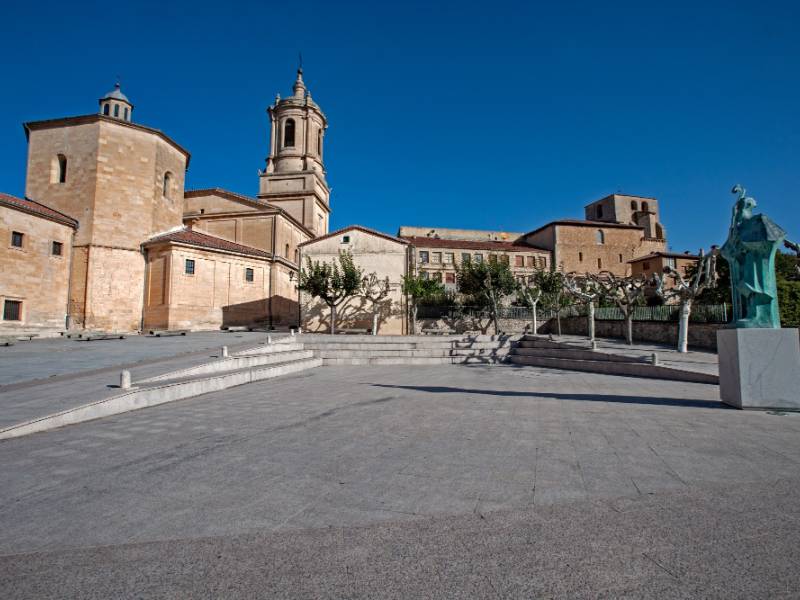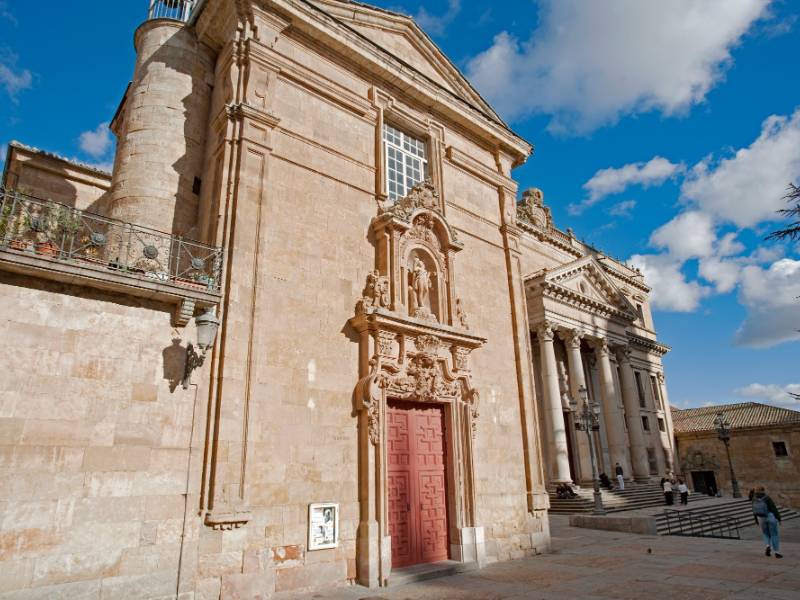Way of the Language - Valladolid
- Route Data
- Ascent slope
- 690 m.
- Previous
Valladolid has been esteemed as the city where the best Spanish is spoken. An honour which it shares with the rest of the region’s provinces, originating from its status as Capital City during the 15th century. Scholars and the learned of that period helped promote and transmit a language that was refined and that others could be modelled on. The best writers, finding inspiration in the city also contributed to its diffusion.
Today the Universidad de Valladolid plays an important part in the spread of the Castellano language.
All around Valladolid, many street names remind tourists of the city’s links with the world of Humanities. A visit to the birthplace of José Zorrilla and the home of Miguel de Cervantes, where he is likely to have written one of his universal works, ‘El Coloquio de los Perros’, is a must.
Reference to content
What to see?
 Cathedral of ValladolidMore information
Cathedral of ValladolidMore informationPurist and sober, it reveals the influences of the Roman style in all its architecture and decoration. It does not house any important pieces, although in its time it did own a painting by El Greco. Today...
 Chapel of San Juan Bautista of the church of El SalvadorMore information
Chapel of San Juan Bautista of the church of El SalvadorMore informationIt is the oldest chapel of the Church of El Salvador, and was founded and by the layer Mr. Gonzalo González de Illescas, judge of the Royal Chancery of Valladolid and his wife Doña Marina de Estrada. It...
 Church and Convent Descalzas RealesMore information
Church and Convent Descalzas RealesMore informationThe church was built in the early 17th century, when the cour of Felipe II was headquartered here and the works finished in 1615.The church has a single nave, and that is why the façade forms a vertical...
 Church of the AngustiasMore information
Church of the AngustiasMore informationConstruction of the present church started in 1597 and ended in 1604. The plans were drawn by the architect Juan de Nates. Building was carried out with the assistance of Martín de Uriarte.The main altarpiece...
 Church of the PasionMore information
Church of the PasionMore informationThe church of la Pasion is the headquarters of the Penitential Brotherhood of the Holy Passion of Christ since the XVI century, and houses the Museum of Painting of the city of Valladolid working as municipal...
 Church of the Vera CruzMore information
Church of the Vera CruzMore informationThe façade was built by Diego de Praves in 1595. The front is quite high, so as to allow access to the Easter floats. In 1667 the church was expanded, since it was not big enough for float traffic. The...
 Church of Our Lady of the PilarMore information
Church of Our Lady of the PilarMore informationThe Church of Our Lady of Pilar of Valladolid is located in the new working-class neighborhood of La Pilarica that emerged at the beginning of the 20th century on the outskirts of the city of Valladolid,...
 Church of San AgustinMore information
Church of San AgustinMore informationThe church was founded in 1407. The architect, Diego de Praves, established the building conditions in 1619. Hernando del Hoyo and Rodrigo de la Cantera were responsible for the actual erection of the...
 Church of San BenitoMore information
Church of San BenitoMore informationThe monastery was founded by Juan I in 1390. The church consists of three large naves covered by a starred rib vault of carved stone.The present church was started in 1499 by the architect Juan de Arandia...





